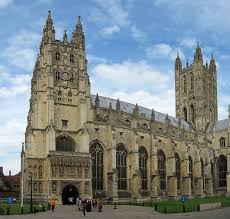Exploring the Historical Significance of Canterbury Cathedral

Introduction
Canterbury Cathedral, a UNESCO World Heritage Site, holds immense historical and architectural importance in England. As one of the oldest cathedrals in the country, it not only serves as the seat of the Archbishop of Canterbury but also stands as a significant symbol of Christianity in England. With a rich history dating back to its founding in 597 AD, the cathedral continues to attract millions of visitors each year, highlighting its enduring relevance in today’s society.
Historical Background
Founded by St. Augustine, the cathedral has undergone several architectural transformations, especially after the devastating fire in 1174. The resulting Romanesque and Gothic styles reflect the evolving artistic trends of the time. Over the centuries, Canterbury Cathedral has been a site of pilgrimage and has hosted significant events, including royal ceremonies and the martyrdom of Thomas Becket in 1170, which further solidified its prominence.
Architectural Features
Canterbury Cathedral is renowned for its stunning architecture, featuring intricate stone carvings and stained glass windows that portray biblical narratives. The Nave, with its magnificent vaulted ceilings, and the eastern Trinity Chapel, which houses the shrine of Thomas Becket, are particularly noteworthy. Visitors can explore the picturesque Cloisters and the numerous chapels that provide a glimpse into the spiritual life of the medieval church.
Recent Developments
In recent years, significant conservation efforts have been undertaken to preserve the cathedral’s structure and artworks. Following the completion of a £5 million fundraising campaign, restoration initiatives have ensured the protection of this historic site for future generations. Additionally, the cathedral has adapted to modern visitor needs, improving accessibility and establishing informative exhibitions that engage visitors with its history.
Conclusion
Canterbury Cathedral is more than just a religious building; it is a vital part of England’s cultural heritage. As it continues to adapt to the changing times, its historical significance only grows stronger. For visitors and historians alike, Canterbury Cathedral remains a treasure trove of art, history, and spirituality, providing insight into the past while fostering a deep appreciation of England’s rich tapestry. The ongoing conservation efforts and the cathedral’s committed outreach programs ensure that it will remain a beacon of history for years to come.









